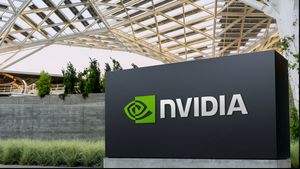JAKARTA - Alphabet, Google's parent company, has tried and failed to bring internet access to rural and remote areas using high-altitude balloons in the stratosphere. However, this time the company conveyed internet service businesses to remote areas using light.
The project known as Taara is part of an Alphabet innovation laboratory called X, also known as the "Moonshot Factory". The project began in 2016 after an experiment using stratosphere balloons to deliver internet had problems due to high costs, according to company executives.
"This time, the progress of the project went better," said Mahesh Krishnaswamy, who leads Taara, quoted by Reuters.
Taara and Bharti Airtel executives, one of India's largest telecommunications and internet providers, told Reuters they are now heading to the large-scale implementation stage of new laser internet technology in India. Unfortunately, the financial details about the project were not disclosed.
According to Krishnaswamy, Taara has helped connect internet services in 13 countries so far, including Australia, Kenya, and Fiji. He added that Taara had struck a deal with Econet Group and its subsidiary, Liquid Telecom, in Africa, internet provider Bluetown in India, and Digicel in the Pacific Islands.
"We're trying to be one of the cheapest and most affordable places where you can earn dollars per gigabyte for end consumers," Krishnaswamy said.
The Taara engine is shaped like a traffic light that emits laser beams carrying data, namely an internet fiber optics without cables. Partners such as Airtel use these machines to build communication infrastructure in difficult-to-reach places.
Krishnaswamy said that he gained insight while working on a failed balloon internet project called Loon, which uses lasers to connect data between balloons, and then apply the technology on land.
"We call this a composite moonshot," said Astro Teller, who leads X and is known as the "captain moonshot".
X is Alphabet's research division that develops projects bordering science fiction. The division has spawned autonomous car technology company Waymo, drone Wing delivery service, and health technology startup Very Life Sciences.
"Taara sends more data every day than Loon has done in his history," Teller said.
Randeep Sekhon, head of technology Bharti Airtel, said that Taara will also help provide faster internet services in urban areas in developed countries. He said that sending data between buildings is cheaper than burying fiber optic cables. "I think this is very disturbing," he said.
Krishnaswamy recently located in Osur, a village in India where he spent a summer vacation as a child, three hours south of Chennai, to install Taara equipment. Osur will receive high-speed internet services for the first time this summer.
"There are hundreds of thousands of villages like this across India," he said. "I can't wait to see how this technology can help connect everyone there."
Google in July 2020 committed to digitizing India with an investment of 10 billion US dollars (150 trillion). The company has also invested 700 million US dollars (Rp10.5 trillion) to own 1.28% of Bharti Airtel's shares last year. X and Google are brother companies under Alphabet, while Taara's partnership with Bharti Airtel is separate from Google's investment.
When asked about the negative side of the internet as X and Taara pushed for their mission to connect the rest of the world. "I admit that the Internet is not perfect, but I would suggest that maybe it is the subject of different moonshots to improve internet content," Teller said.
The English, Chinese, Japanese, Arabic, and French versions are automatically generated by the AI. So there may still be inaccuracies in translating, please always see Indonesian as our main language. (system supported by DigitalSiber.id)













